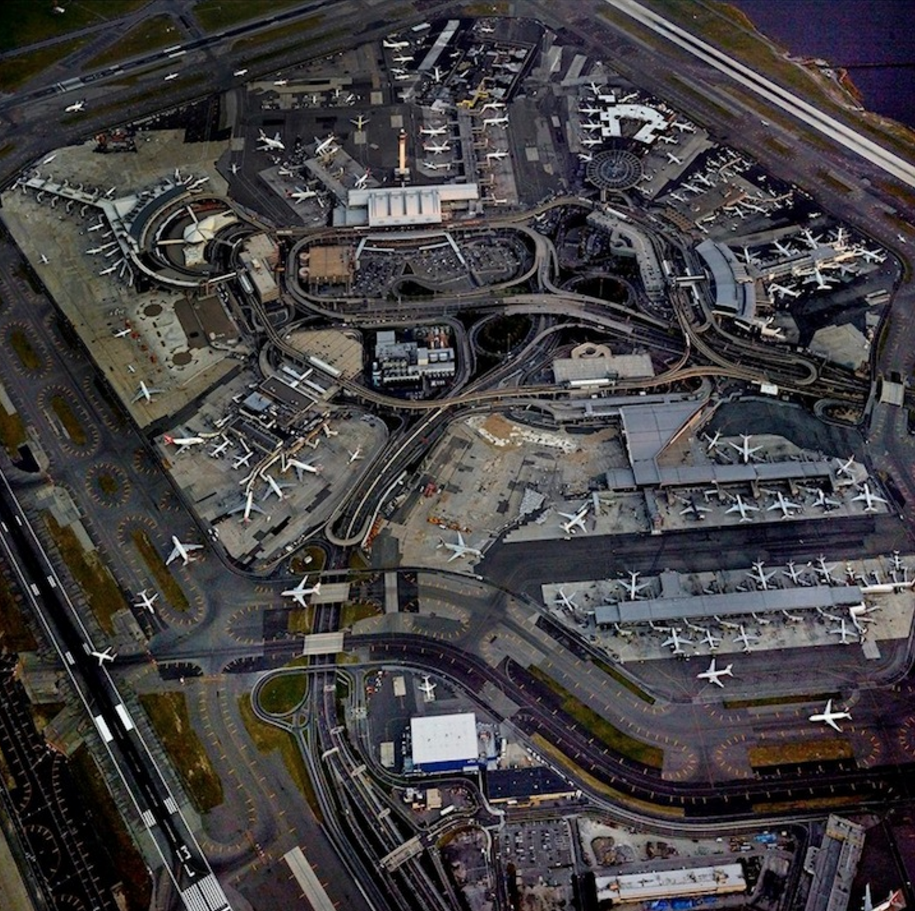Airports and Aviation Leadership

Example Projects of CivTek Principals include:
International Airports:
United Airlines Passenger Terminal 1 Complex, O’Hare International Airport, Chicago, Illinois:
Design engineer for Terminal 1, which includes over 800 feet of paved tarmac between the
main concourse and a parallel concourse to allow for dual taxiing of wide-body aircraft
between the two concourses. An underground pedestrian tunnel, equipped with moving
sidewalks, and an overhead kinetic light sculpture connects these concourses. The terminal
further houses one of the world's largest underground baggage-handling rooms, capable of
processing 480 bags per minute. Responsible for design of the slabs and tunnels as described
above and for overseeing delivery, installation, and stressing of multi-strand and monostrand
prestressed concrete.
Regional Airport:
North American Jet Fixed-Base-Of-Operations (FBO), Palwaukee Airport, Wheeling, Illinois:
Principal-in-charge for structure/civil for two phases. The original building was created in the
first phase. It features a customer lounge, business meeting rooms, and a
communications center, as well as administrative offices for the FBO. The second phase
involved adding 9,000 square feet of office space and 25,000 square feet of hangar space to
the existing facilities, which include an 8,000 square foot headquarters and a 21,000 square
foot hangar. The additional space will include an aviation center, expanded NAJ corporate
headquarters, flight school, pilot retail supply house and an upscale cafe.
Aviation Operations and Aviation Logistics Experience of CivTek's CEO
CivTek International's CEO, Thomas Young, PE served on both the C-141B Starlifter and C-5 A&B Galaxy Global Strategic Airlift Systems

U.S. Air Force - Global Aviation Operations and Strategic Airlift
Combat Aircrew, Loadmaster
Amassed over 2000 flight hours. Flew standard channel resupply and global contingency missions to Far East, Central and South America, Africa, Europe and the Middle East. Utilized structural, mechanical, and electrical engineering judgment to ensure life safety of aircraft by calculating the center-of-gravity of cargo and the aircraft, calculating the correct cargo restraint and tie down and performing pre and post flight inspections of aircraft electrical, structural, and mechanical systems. Performed construction foreman and engineering technician type duties by directing the loading and offloading of aircraft. Developed and/or reviewed and approved cargo load plans to ensure correct display of placards per Department of Transportation (DOT) and de-confliction of incompatible hazardous materials. Types of cargo included large missiles, solid rocket propellants, explosives, armored vehicles, helicopters, cannons, trucks, fire trucks, heavy construction equipment and miscellaneous hazardous materials, explosives, arms, and combat personnel. Failure to perform correctly could have resulted in loss of aircraft and loss of life. Received extensive training in aircrew and emergency management and leadership. Received specialized training in and was designated as an ENAF (emergency nuclear airlift forces) crew member. Authorized to carry concealed weapons. Received combat small arms, survival, escape and evasion and training in other skill sets necessary to survive in combat behind enemy lines.
ALCE – Airlift Control Element
Served duties as a NCO in Classified ALCE Contingency Operations. Deployed to austere airfields, trained foreign personnel and set up all airfield, maintenance, security and logistics operations from scratch. Apart from a few changes in acronyms and U.S. Agencies, the mission during Mr. Young’s service of the 1980’s was similar to the modern description below.
Airlift Control Flight (ALCF) personnel are formally trained and operationally certified in the oversight of the total air mobility process which includes: AMC C3 (Command, Control, and Communications) Systems and Reporting, TACC Mission Coordination, Air Operations Planning and Execution, Load Planning and Equipment Preparation, Aerial Port Operations, Aircraft Maintenance, Joint / Civil Command Relationships, and Airlift User / Affiliate Coordination.
The ALCF deployable components are known as Airlift Control Elements (ALCE) which are similar to USAF / Air Mobility Command – Contingency Response Elements (CRE). ALCEs are scalable to meet the requirements of the supported commander. ALCFs are maintained in a 36 hour maximum alert response status and are able to deploy and operate at “Austere” locations around the world.
As organizations involved with inherently joint airlift operations, ALCFs support “Affiliates” with formal training in preparation for deployment via airlift as well as train with affiliates in joint command and control processes at locations with minimal DoD / Civil infrastructure. AFRC ALCF affiliates include: Reserve Forces from USA, USN, USMC, and USCG as well as civil responders under DoJ, DHS, and USAID.
Here are the kinds of airlift operations ALCEs are used to support:
- Passenger and Cargo Movement – Focused on en-route and/or austere environments
- Combat Employment and Sustainment – Landing Zone / Drop Zone operations
- Aeromedical Evacuation – Integrating Airlift/OPS with AE
- Special Operations Support – Liaison / agile C3 support
- Operational Support Airlift – Light aircraft operations

